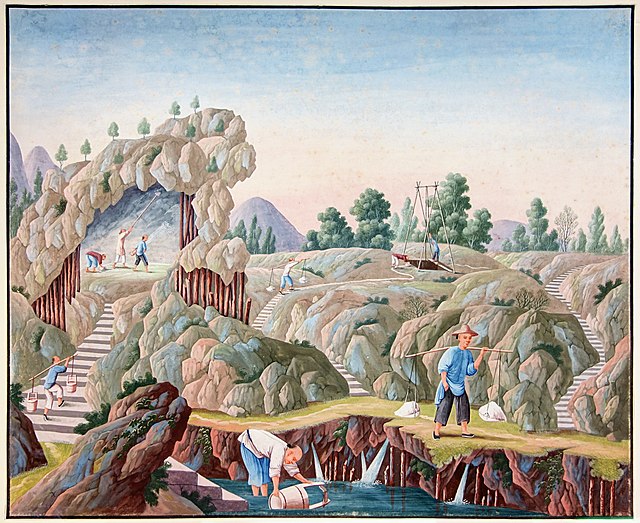Petuntse, also spelled petunse and bai dunzi, baidunzi, is a historic term for a wide range of micaceous or feldspathic rocks. However, all will have been subject to geological alteration of igneous rocks that result in materials which, after processing, are suitable as an ingredient in some ceramic formulations. The name means "little white bricks", referring to the form in which it was transported to the potteries.
19th century illustration of the extraction of petuntse and kaolin in China
A lump of Japanese pottery stone
Porcelain is a ceramic material made by heating raw materials, generally including kaolinite, in a kiln to temperatures between 1,200 and 1,400 °C. The greater strength and translucence of porcelain, relative to other types of pottery, arise mainly from vitrification and the formation of the mineral mullite within the body at these high temperatures. End applications include tableware, decorative ware such as figurines, toilets and washbasins, and products in technology and industry such as electrical insulators and laboratory ware.
Chinese Jingdezhen porcelain moonflask with underglaze blue and red. Qianlong period, 1736 to 1796
A lithophane exploits the translucency of porcelain
Nymphenburg porcelain group modelled by Franz Anton Bustelli, 1756
Soft-paste porcelain swan tureen, 1752–1756, Chelsea porcelain






